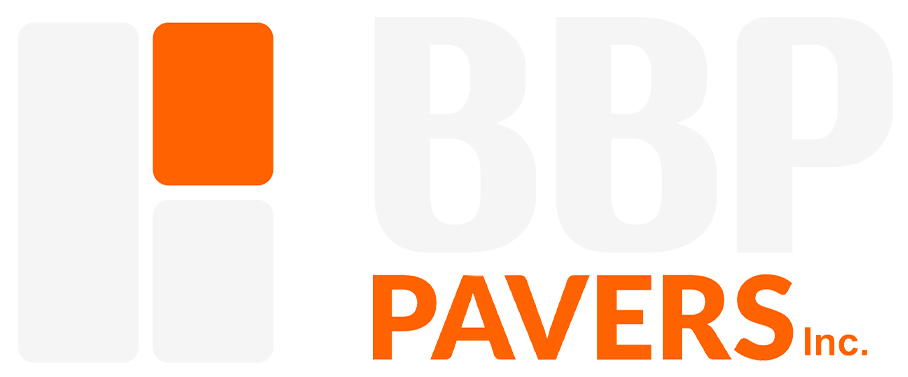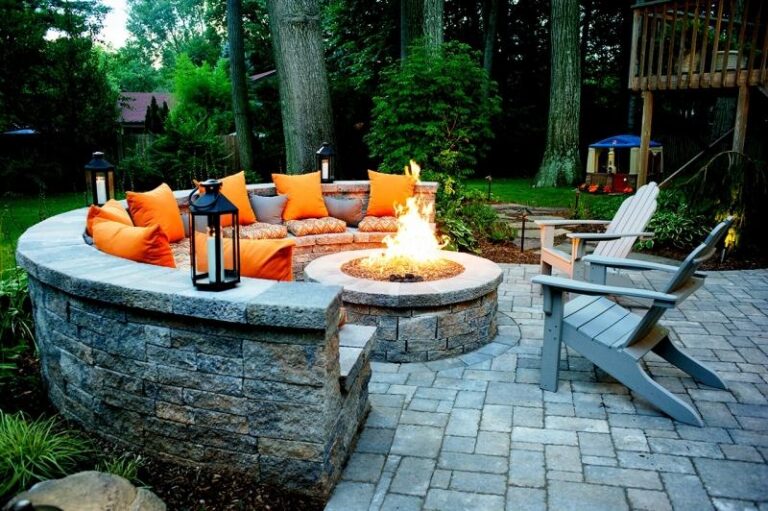How Artificial Turf Can Transform Low-Maintenance Outdoor Spaces: Key Benefits and Insights

Artificial turf offers a simple solution for those looking to create low-maintenance outdoor spaces. This type of grass requires little care, making it perfect for people who want a nice-looking yard without the hassle of regular upkeep. By using artificial turf, homeowners can enjoy a neat and tidy yard year-round with minimal effort.
When thinking about aesthetic appeal, artificial turf stands out because it always looks fresh and green. Unlike natural grass, it does not need watering, mowing, or fertilizing, saving time and water. This feature is especially useful in areas with droughts or water restrictions.
Another benefit of artificial turf is its durability in various climates. It can withstand different weather conditions without losing its lush appearance. This makes it an ideal choice for anyone wanting an attractive and practical outdoor space with few demands.
Understanding Artificial Turf
Artificial turf has many uses in outdoor areas, providing durability and low maintenance. It consists of various materials, each serving a specific purpose. There are different types available, suited for specific needs.
Components of Artificial Grass
Artificial grass is made of several components. Polyethylene is a common material used for the grass blades because it feels soft yet remains tough. Another element is the infill, which helps support the blades and keep them upright. It can be made of sand, crumbled rubber, or other materials, giving a natural look and cushioning.
A weed barrier fabric is also used beneath the turf to prevent weeds from growing through. UV-resistant coatings protect the grass from sunlight, preventing it from fading or becoming brittle. These components work together to ensure the turf’s longevity and visual appeal.
Varieties of Synthetic Turf
Synthetic turf comes in various types based on its specific use. Some are designed for landscaping, which emphasizes appearance and comfort. Others, like sports turf, focus on resilience and performance, needing to withstand heavy use and impact.
Different pile heights and densities are available, catering to specific needs, such as aesthetics or cushion feel. The choice often depends on where and how it will be used. Each variety aims to combine durability with a realistic look, meeting the demands of different environments.
Benefits of Artificial Turf
Artificial turf offers a variety of benefits, making it an attractive choice for those looking for low-maintenance outdoor spaces. It is cost-effective, requiring less money for upkeep. Environmentally, it helps with water conservation and reduces the need for chemicals. Additionally, it enhances the look and function of outdoor areas.
Economic Advantages
Artificial turf is a cost-effective solution for outdoor spaces. It requires minimal maintenance compared to natural grass, saving time and money on watering, mowing, and fertilizers. Over its long lifespan, which can exceed 15 years, the reduced upkeep leads to overall savings.
Installing artificial turf can be more expensive upfront. However, these initial costs are offset by low ongoing expenses. No need for lawn equipment or high water bills makes it a practical option. This is particularly advantageous for commercial spaces or residential homeowners looking to save money.
Environmental Impact
Artificial turf significantly reduces water usage, aiding in water conservation efforts. Since it doesn’t require regular watering, it can save thousands of gallons of water each year. This eco-friendly aspect is particularly important in drought-prone areas where water resources are limited.
It also lessens the need for chemical fertilizers and pesticides. This reduces harmful runoff into nearby waterways. The absence of mowing equipment means fewer emissions, making artificial turf an environmentally friendly choice.
Aesthetic and Functional Gains
Artificial turf offers consistent beauty, keeping a lush, green appearance year-round. It doesn’t bald or discolor, maintaining its aesthetic appeal under various weather conditions. This feature is ideal for families who want a reliable space for activities without constant upkeep.
The turf is durable, holding up well in high-traffic areas. Its longevity means it can withstand regular use without becoming worn down. This makes it suitable for sports fields, playgrounds, and backyards, providing both aesthetic appeal and functional advantages.
Installation and Maintenance
Installing artificial turf transforms outdoor spaces by making them easy to manage. From securing the turf to routine care, understanding these processes ensures durability and performance.
The Installation Process
The first step in installing artificial turf is to prepare the ground. This involves removing existing grass and debris, followed by leveling the surface. It’s important to create a solid base using materials like crushed stone.
Securing the turf is crucial. Once placed, the turf edges are anchored using stakes or adhesive. This prevents shifting. Seaming tape connects turf rolls together, creating a seamless look.
Infill material is spread across the surface. Often made from sand or rubber, it helps stabilize the turf and improve drainage. The infill also gives the turf a more natural look and feel. A power brush is used to evenly distribute the infill, ensuring the turf stands upright.
Maintenance Tips for Synthetic Turf
Maintaining artificial turf is simple. Regular brushing helps keep the turf fibers standing tall. A stiff brush is recommended for most areas.
Debris removal is also important. Use a leaf blower or rake to clear leaves and twigs. This prevents the buildup of organic material, which could encourage weed growth.
Routine cleaning is essential. Rinsing the turf with water removes dust and dirt. For pet owners, cleaning may involve using a mild soap solution to eliminate odors. Finally, inspect seams and edges regularly to ensure the turf remains securely in place.
Eco-Friendly Practices in Artificial Turf Landscaping
Artificial turf offers an eco-friendly option by reducing water use and supporting local ecosystems. These practices combine sustainability and innovation for a more sustainable outdoor space.
Conservation and Sustainability
Artificial turf can greatly reduce water consumption. Traditional lawns require regular watering, often leading to excessive water use. In contrast, synthetic lawns do not need watering. This can save a significant amount of water, especially in drought-prone areas.
Moreover, since artificial turf doesn’t require fertilizing, it decreases chemical runoff into local waterways. This protects the environment, reducing pollution and promoting cleaner ecosystems. Regular lawns often need upkeep with fertilizers and pesticides, which can have harmful impacts on the environment.
Supporting Biodiversity with Synthetic Options
Artificial turf can work with native plants to support biodiversity. While the turf itself is synthetic, the surrounding landscape can include native plant species. These plants provide habitats for local wildlife such as insects and birds, encouraging biodiversity.
Synthetic turf can help reduce soil erosion and prevent stormwater runoff. By integrating proper drainage systems, artists protect nearby ecosystems from being overwhelmed by heavy rainfall. This setup keeps landscapes looking tidy and helps preserve nearby natural habitats.
Designing Outdoor Spaces with Artificial Turf
Artificial turf can enhance outdoor areas by making them attractive and easy to maintain. Both residential and commercial landscapes benefit from synthetic grass, offering versatility in design and practicality for activities and sports.
Transforming Residential Areas
Artificial grass transforms a front yard into an eye-catching space with great curb appeal. For small yards, synthetic turf creates a green oasis without the need for regular mowing or watering. It can also turn a backyard into a relaxed retreat, where families and pets enjoy clean play areas. This transformation is made easy with options like artificial turf installation.
Artificial grass provides a consistent look for homes, enhancing landscape design with lush, green coverage all year round. Homeowners can mix turf with pathways or garden beds, achieving a balanced and polished appearance. Low-maintenance living with artificial turf offers time savings and fewer upkeep tasks, allowing more time for enjoying the space.
Artificial Turf for Commercial Landscapes
Commercial spaces often seek the visual and practical benefits of synthetic grass. By incorporating artificial turf, businesses can maintain neat, professional landscapes that welcome clients and customers. This can include well-groomed entryways and vibrant common areas that stay green regardless of season or climate.
Artificial grass is ideal for plazas, shopping centers, or office complexes. It presents a uniform and tidy look while reducing upkeep costs. Using artificial turf in these areas provides an appealing setting for outdoor activities such as community events or informal meetings. The visual impact of artificial grass supports brand image by showing commitment to aesthetic appeal.
Activities and Sports on Synthetic Grass
Synthetic grass offers ideal surfaces for sports and play areas, making it a favorite choice in both residential and commercial settings. It provides a smooth, level surface for activities like soccer, golf, or even a backyard play area for kids. These surfaces are durable, withstanding heavy use without wearing down quickly.
With excellent drainage features, artificial turf ensures fields or play spaces remain usable after rain. This helps to prevent cancellations and allows for continuous fun. The presence of synthetic grass encourages a variety of sports and allows families or communities to create dedicated spaces for both casual play and organized activities.
Specialty Applications of Artificial Turf
Artificial turf offers versatile uses, transforming outdoor spaces with ease. The focus here is on creating beneficial environments for pets and enhancing experiences in personal or professional golf practice areas.
Creating Pet-Friendly Environments
Artificial turf provides a durable solution for pet-friendly spaces. It can withstand high-traffic areas where pets play or lounge. The materials used are designed to be non-toxic, ensuring safety for pets. The drainage system in artificial grass helps keep areas dry, making it easy to clean up after pets.
Odor control is another advantage. Many turf options are treated to neutralize pet odors. This means backyards remain fresh, even with frequent use. Turf also prevents muddy paws, so pets can enjoy the outdoors during or after rain without bringing dirt inside.
Golf Courses and Putting Greens
Installing artificial turf for golf courses and putting greens provides a low-maintenance practice area. This turf mimics the feel of natural grass while requiring little upkeep. There’s no need for watering or mowing, saving time and resources. The consistency of the surface helps golfers improve their skills.
Artificial green can be tailored to suit different play levels. From beginners to professionals, the customization allows varied challenges in design. High-traffic resistance ensures the turf remains in good condition, even with frequent use. These spaces offer a year-round golfing experience regardless of weather conditions.
Maximizing Property Value with Artificial Turf
Artificial turf can boost property value with its neat appearance. It gives a fresh look to any lawn, making the property more appealing to potential buyers. A well-maintained exterior often creates a positive first impression. This can make a significant difference when selling or renting out a property.
Curb appeal is important for property value. A low-maintenance lawn using artificial turf can look vibrant all year. This can attract more attention from passersby. Not having to water or mow the lawn saves time and effort, making it a practical outdoor solution.
Artificial grass is durable and weather-resistant. It stays green without browning, even in harsh weather conditions. This advantage keeps properties looking their best in any season.
Below is a table showing benefits related to property value:
| Benefit | Description |
|---|---|
| Low Maintenance | Reduces upkeep time and costs |
| Improved Appearance | Always looks neat and presentable |
| Weather Resistance | Stays green regardless of climate conditions |
| Durability | Lasts longer than natural grass without losing appeal |
Artificial turf can be a worthwhile investment for property owners. With its ability to improve curb appeal and provide low-maintenance landscaping, it can help maximize the property’s value efficiently.






